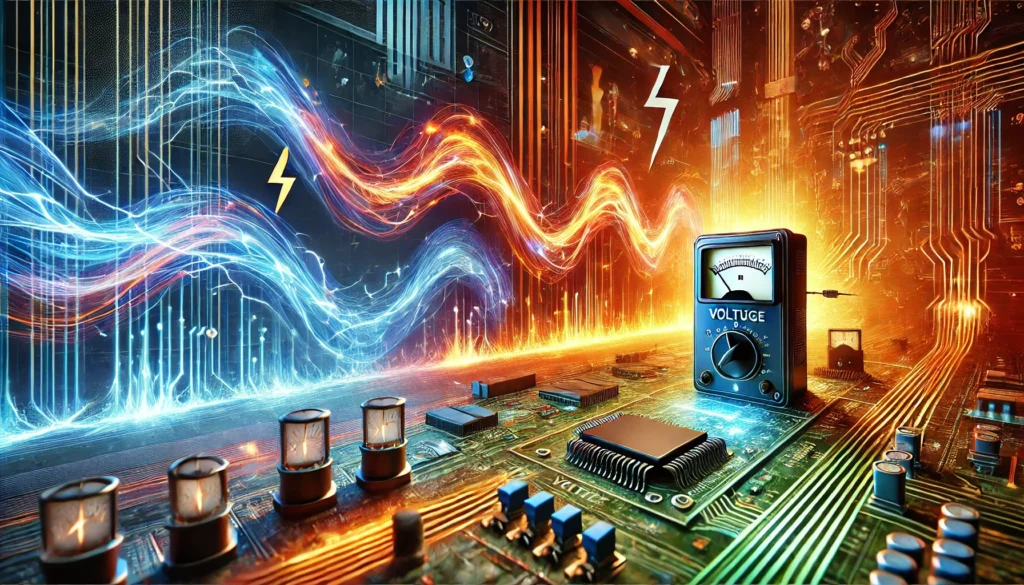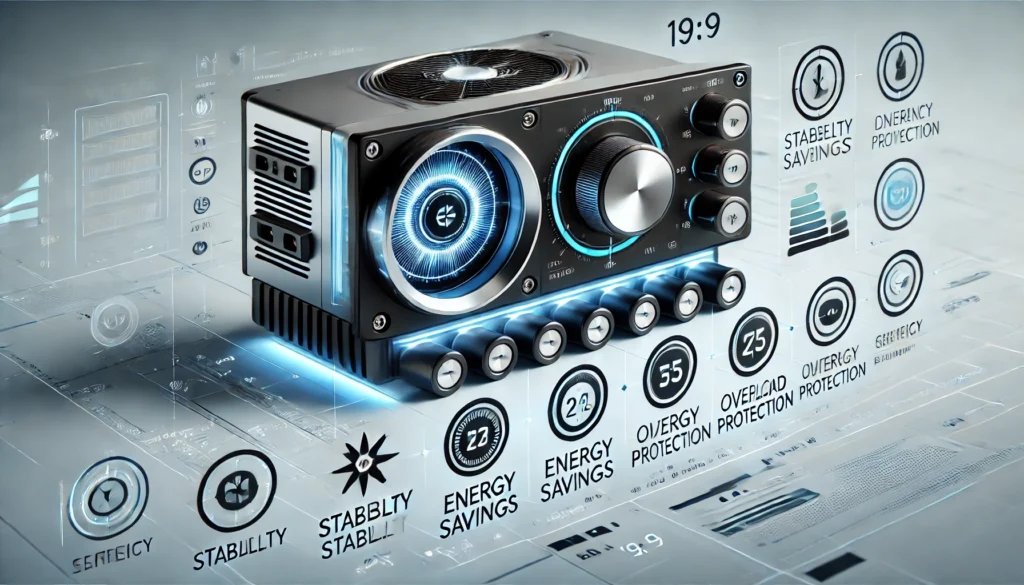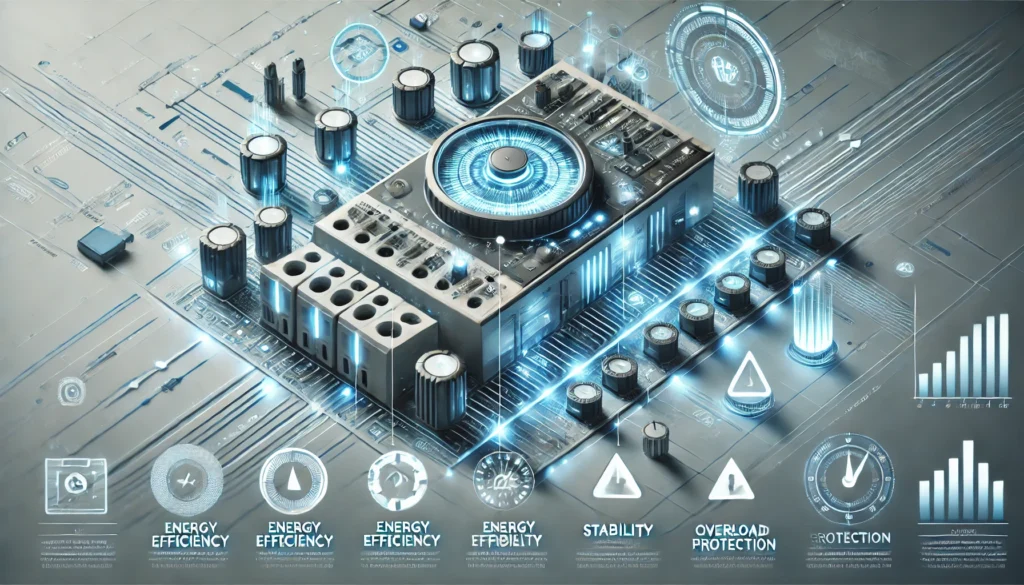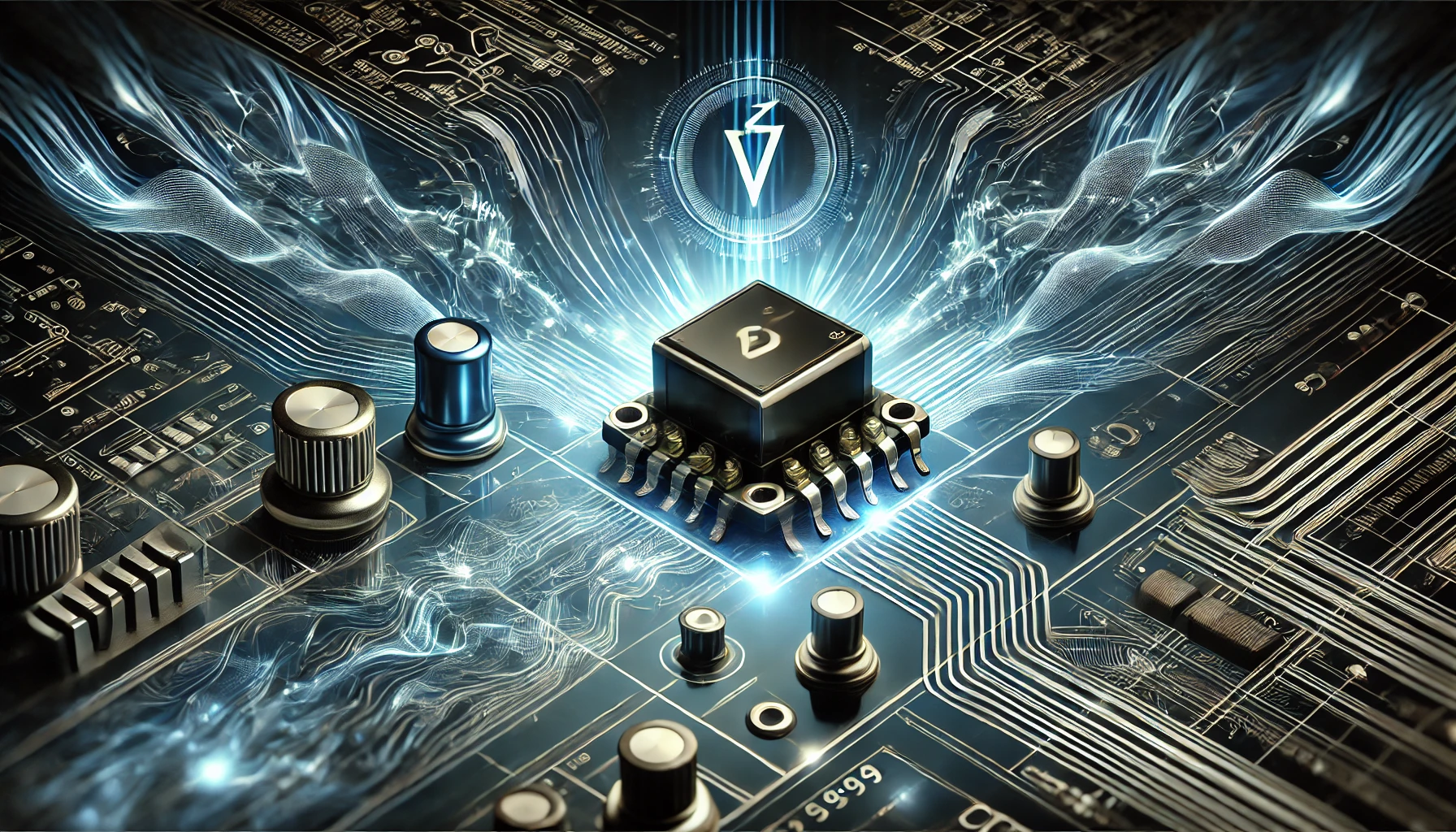Introduction
Voltage regulators are fundamental components in electronic and electrical systems whose purpose is to provide a stable output voltage regardless of changes in input voltage or load conditions. It supplies balanced and regulated power to sensitive electronic equipment, making sure they function properly. Whether it is utilized in a smartphone or used in semiconductor programming machines, voltage regulators occupy an intrinsic place in the world today. voltage regulators they have evolved into various types for different applications. Switching regulators are efficient where linear regulators are simple and low noise. Digging deep into the voltage regulation system
What Is Voltage Regulator ?
Voltage Regulator is a type of electronic device that helps achieve the constant and stable output voltage irrespective of changes in input voltage or load conditions. It serves as a vital link in electrical systems by providing accurate voltage information to sensitive devices that depend on it for proper, reliable operation at the right operating conditions. Voltage regulators are common and ideal for applications where voltage spikes, drops, or fluctuations can disrupting even damage your electrical devices from consumer electronics to industrial machinery and automotive systems. Voltage regulators provide a constant voltage supply using different technologies including resistive or switching methods, and they are essential to maximize efficiency and lifespan of the connected devices.

How Voltage Regulator Work
Continuous monitoring of output voltage makes the regulator able to get precise adjustments for it regardless of different load condition or input voltage variation. The regulator essentially compares the output voltage with a reference voltage, which is usually a stable internal value. If the output voltage moves away from this reference, the regulator uses some kind of feedback mechanism to re-correct it.
for example linear voltage regulators, a pass element (typically a transistor) is put into its active region to drop the extra voltage as heat while holding constant output. In turn, the transistor varies resistance based on how much apart the output voltage is from the reference value − enabling a clean and noise-free power supply. This is simple, but wastes energy as heat and so is inefficient for high-voltage or high-current applications.
On the other hand in case of switching voltage regulators it has a different approach, it uses high-frequency electronic switches (transistors or MOSFETs) and Energy storage components Electrons like Inductors and Capacitors. Switch is also in on–off form, it controls how energy is transferred from the input to the output. The “on” state refers to the time when energy is being stored in the inductor and the “off” state refers to when that stored energy is released out into the load. The feedback mechanism changes the duty cycle (on-time versus total cycle time) needed to maintain an output voltage. Because they lose little energy while running, switching regulators are very efficient and well suited for battery-operated devices as well as high power applications.

Types of Voltage Regulators
Based on their working principle and different characteristics, voltage regulators can be divided into two general types — linear (or low-dropout) voltage regulators, and switching voltage regulators — each suited to use in particular applications. Linear voltage regulators operate on the principle of using resistive elements, i.e. transistors which drop excess voltage in a linear fashion, resulting in a clean smooth output. They are classified into series regulators, which consists of a pass transistor that connects in series with the load; and shunt regulator which redirect excess current away from the load to avoid voltage fluctuations. Linear regulators are low in complexity and cost, with good performance regarding electrical noise which is ideal for lower power applications that require high accuracy. But they are less efficient as the rest of energy is lost as heat, especially when the difference between input and output voltage is high. Conversely, regulators based on switch-mode power supplies employ high-frequency switching devices to control energy storage elements (like inductors, and capacitors) to regulate voltage. These consist of buck (step-down), boost (step-up), buck-boost (step-up / step-down) and flyback regulators, commonly used in isolation power supplies. Switching regulators excel in a diverse set of input and output voltages, have high efficiency, and are made for higher power or battery operated applications. On the flip side, they can create higher electrical noise and need more consideration in the design and layout than linear regulators.
Linear Voltage Regulators
Why do linear voltage regulators dissipate excess energy as heat to produce a fixed output voltage? Biasing circuits operate in the linear region of a transistor which behaves like a variable resistor. Such voltage regulators are LM78xx series (fixed voltage) and LM317 (adjustable voltage).
Advantages:
Simplicity and ease of use
Low noise and ripple
Quick reaction towards deformation in load
Limitations:
Not suitable for large differences between low and high voltage
Proper thermal management is required to enable heat generation
Switching Voltage Regulators
With high-frequency switching, running switch regulators convert the input voltage into a desired output. These include:
It means Buck Converter: It step-down the input voltage
Boost Converter : increases voltage of input
Buck-Boost Converter: The converter that does both stepping up and down

Voltage Regulator Advantage
Voltage regulators provide very useful features that are essential in any electrical and electronic systems. A primary rationale behind these is to establish a stable constant output voltage, which helps in reliable functioning of sensitive electronic devices under fluctuation of input voltage or loading condition. Such stability safeguards the components against overvoltage or under voltage, preventing damage and increasing system reliability by lengthening component lifespan. On the other side, voltage regulators improve performance because providing an output voltage without impacting devices is very important to applications such as medical equipment and communication devices, as well as industrial machinery. For example, switching voltage regulators are very power-efficient: there is little energy wasted as heat, which means they are suited for systems where every joule counts or even in battery-powered applications. Although less efficient, linear regulators offer simplicity and low noise output crucial in audio gear and other applications sensitive to noise. Moreover, new voltage regulators come with inbuilt protection features (like thermal shutdown and overcurrent protection) to prevent devices and systems from possible damage. Such benefits lead the use of voltage regulator in a wide variety of applications where maintaining power quality and system integrity is paramount.
Voltage Regulator Disadvantage
Though voltage regulators are indispensable for ensuring stable power supply, they present some demerits which should be taken into account during system design. Example: Linear voltage regulators are inherently inefficient in case of a high input-output voltage difference because the ‘unused’ energy is being wasted as heat. This decreases efficiency and also requires more thermal management like heatsinks, adding to the size and expense of a system. Additionally, since linear regulators can only step down voltage its flexibility is limited in some applications (i.e. boost of input voltage is not possible). In contrast, switching voltage regulators are typically more efficient but come with several downsides, such as add Additionally, their operation tends to generate excess EMI and output ripple, which can interfere with sensitive circuits unless properly filtered out. Also, the necessity for a careful layout and design to ensure stability with minimum noise makes switching regulators less suitable for applications in need of ultra-low noise e.g., high-precision analog circuits. In summary, there is a balance between efficiency and noise, complexity and thermal performance for voltage regulators; you would select which type depending on the requirements of your application. design complexity and more expensive due to external components like inductors and capacitors.

Applications of Voltage Regulators
- Consumer Electronics
- Smartphones
- Laptops
- Televisions
- Gaming consoles
- Smart home devices
- Automotive Systems
- Battery charging systems
- Electronic Control Units (ECUs)
- LED lighting systems
- Infotainment systems
- Sensors and actuators
- Industrial Equipment
- Robotics and automation systems
- Programmable logic controllers (PLCs)
- Motor controllers
- Factory monitoring systems
- Renewable Energy Systems
- Solar power inverters
- Wind turbine systems
- Battery management systems (BMS)
- Communication Devices
- Radio transmitters and receivers
- Networking equipment (routers, switches)
- Satellite communication systems
- Medical Equipment
- Diagnostic devices (e.g., MRI machines, X-rays)
- Portable medical instruments
- Patient monitoring systems
- Power Supply Systems
- Uninterruptible Power Supplies (UPS)
- DC-DC converters
- AC-DC power adapters
- Aerospace and Defense
- Avionics systems
- Missile guidance systems
- Military communication devices
- Test and Measurement Equipment
- Oscilloscopes
- Signal generators
- Multimeters
- LED and Lighting Systems
- LED drivers
- Street lighting systems
- Indoor and outdoor LED fixtures
Conclusion
They are essential parts, and everything is voltage regulators for delivering stable and reliable power to any great application. Ranging from basic linear styles to highly sophisticated switching topologies, they are designed to fulfill the myriad needs of today’s technology. With reliability and precision being paramount, developments in voltage regulation will only continue to fuel improvements across electronics and power systems. To harness their potential in developing robust and efficient systems we need to understand their principles, types, and applications.










